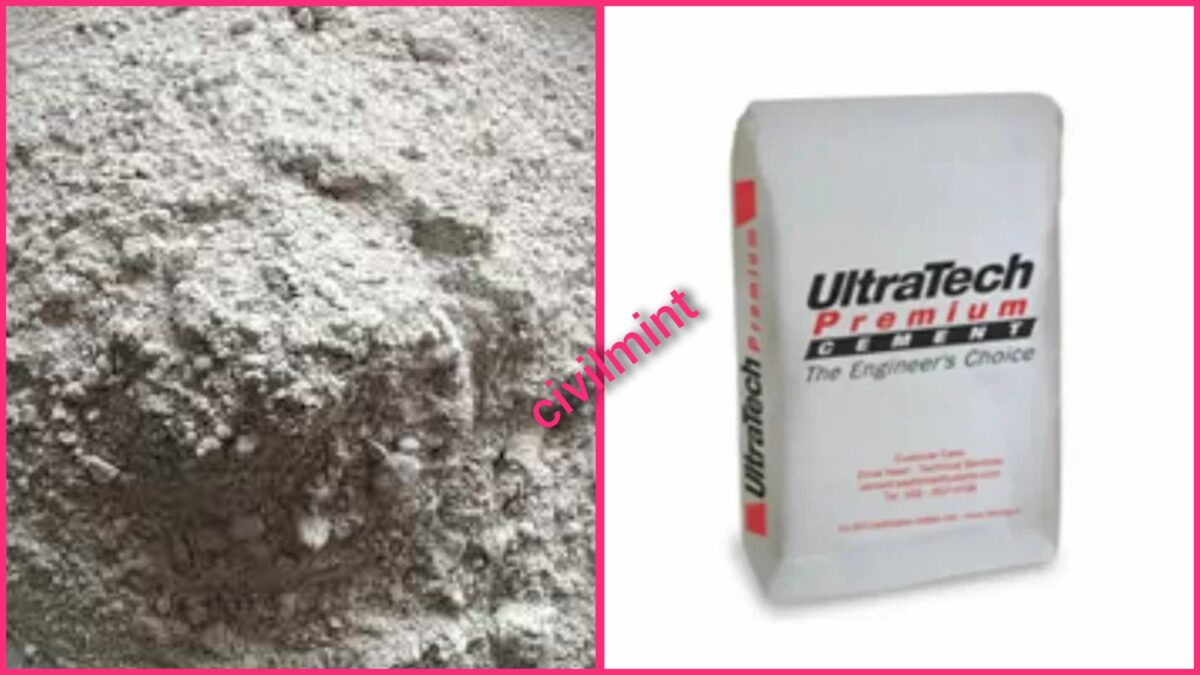Table of Contents
Introduction Of Blast Furnace Cement
Blast Furnace Cement is a type of blended cement that is made by combining Portland cement clinker with a proportion of ground granulated blast furnace slag (GGBS).

Properties of Blast Furnace Cement
- The addition of GGBS to Portland cement improves the durability of the resulting cement.
- Blast furnace cement generates less heat when it is mixed with water.
- It is highly workable.
- Strength is high. It can be used for high rise buildings.
Manufacturing Process
The production of blast furnace cement involves grinding a mixture of Portland cement clinker and GGBS to a fine powder. The proportion of GGBS used in the mixture can vary depending on the desired properties of the cement, but typically ranges from 20% to 80%.
The raw materials used in the production of blast furnace cement clinker and GGBS. Portland cement clinker is produced by heating a mixture of limestone, clay, and other minerals in a kiln to a temperature of around 1,450°C. GGBS is a by-product of the iron and steel industry, which is obtained from the slag that is generated during the production of iron in a blast furnace.
This mixture ground to a fine powder. The GGBS is typically ground separately from the Portland cement clinker, and the two powders are then blended together in the desired proportion.
Blast furnace cement is stored in silos or other storage facilities until it is transported to warehouses and construction sites.
Uses
- Blast furnace cement is used to produce high-strength concrete that is suitable for use in high-rise buildings.
- It can be used to produce concrete that is resistant to chemical attack and has a low permeability, making it suitable for use in bridges and tunnels.
- This type of cement can be used to produce concrete that has a low heat of hydration, making it suitable for use in large concrete structures such as dams.
- It is also used to produce concrete that is resistant to seawater and other corrosive substances.
- Blast furnace cement can be used in marine structures.
- It can be utilized in a different of infrastructure projects, such as roads, railways, and airports, where its durability and high strength make it an ideal choice.
- Blast furnace cement can be used in green buildings.
Major Benefits Of Blast Furnace Cement
- Low environmental impact due to lower greenhouse gas emissions compared to Portland cement.
- Reduced waste generation from the iron and steel industry due to the use of GGBS in BFC production.
- Lower energy requirement for the production of GGBS compared to Portland cement clinker.
- Reduced environmental impact of the iron and steel industry, which is a major industrial emitter of greenhouse gases.
- Improved sustainability due to the use of a by-product.
- Better durability and strength compared to traditional Portland cement due to the use of GGBS.
- Cost-effective solution for construction projects due to its reduced energy requirements and use of a by-product.
Sum Up
Blast furnace cement is a modern material in the construction industry. It is highly sustainable and reduces carbon emissions. This type of cement provides high urability, low heat of hydration, better workability and higher strength characteristics than conventional Portland cement. It is used in high rise buildings and other infrastructure projects.
